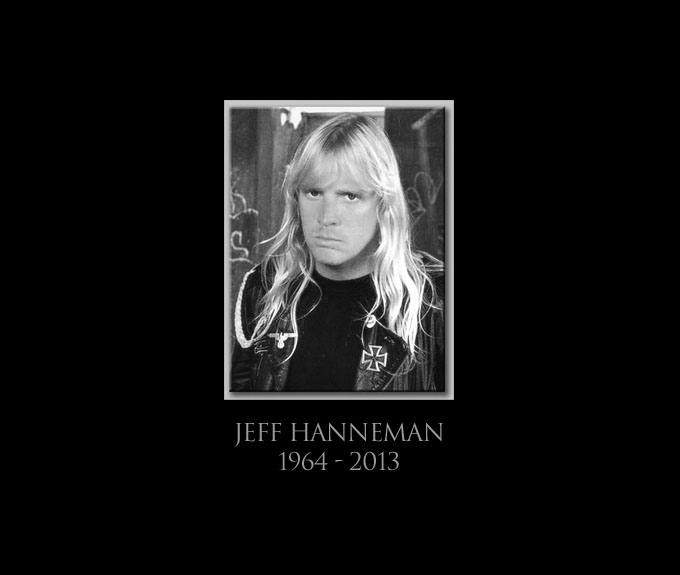Chris Reifert of Autopsy reveals details of “The Headless Ritual”
 Autopsy returns to death metal on July 2, 2013, with a new full-length album entitled The Headless Ritual.
Autopsy returns to death metal on July 2, 2013, with a new full-length album entitled The Headless Ritual.
Famed for their contributions to late-1980s death metal and its continued guidance through the 1990s, Autopsy arose as a band playing a chaotic, filthy, organic sounding form of death metal, which was in contrast to the more rigidly technical “Morbid Angel” inspired bands of the day. In many ways, Autopsy was a bridge between the more structured death metal and the more chaotic but more melodic bands from the grindcore world like Carcass and Bolt Thrower.
Fresh from the studio, Chris Reifert (drums) was able to give us a few words on the nature of the new album, its style and the future for Autopsy.
You’re in the process of recording The Headless Ritual. How do you see this album as continuing and differing from your previous works?
Actually it’s complete and we’re just waiting for it to come out at this point. Musically and lyrically it’s pretty much Autopsy. No major changes, but no rehashing of old ideas either. It’s a big nasty chunk of death metal, simply put.
Will you be using the same production as previous albums for The Headless Ritual? Can you tell us how it sounds so far? Will it be more punk-influenced, or more metal-influenced, than Macabre Eternal?
We went with the same method of recording as we always have, but this one sounds a bit bigger than Macabre Eternal, I dare say. And again, it sounds like Autopsy. There’s fast stuff, slow stuff and all the weird stuff in between.
Thanks, Chris!
At deathmetal.org, we’re naturally looking forward to the new Autopsy. Not only is it another of metal’s legends come back to life in the post-2009 old school metal revival, but it’s also a personal favorite that we believe has potential to revive the intensity of death metal.
Furthermore, this album also promises to bring back the thoughtful and the odd that defined the genre so much during its early days. It was a frontier then and the frontier may be re-opening now. As Chris says, “There’s fast stuff, slow stuff and all the weird stuff in between.” This is a welcome break from the all-ahead-go clones that have made death metal seem one dimensional.
The Headless Ritual will show us Autopsy at the peak of their ability and returning in fine form and fine spirits, as these answers show us. Thanks to Brian Rocha at Fresno Media for his help with this mini-interview!
5 CommentsTags: autopsy, death metal
RocKonference analyzes similarity between metal and video games
 The University of Montreal in Quebec presented a conference on the cultural, aesthetic and historical hybridizations between video games on heavy metal. The presentations, occurring on March 15th, are available via video at the bottom of this post.
The University of Montreal in Quebec presented a conference on the cultural, aesthetic and historical hybridizations between video games on heavy metal. The presentations, occurring on March 15th, are available via video at the bottom of this post.
Although the conference was presented in French, the video is fully captioned in English. Professors Dominic Arsenault and Louis-Martin Guay presented their research as the cornerstone of the conference, covering the origins of their interest in the topic and some of its history.
That history moves us through the arcade era from pinball machines to stand-alone video games, then takes us through the home gaming revolution with 8-bit machines, and finally to 16-bit gaming and now modern game as technology evolved and became cheaper. It compares the music, imagery and traditions of both metal and video game cultures.
At the peak of this is Professor Arsenault’s attempt to meld metal and classic gaming, covering “experimentations in transfictionality, sound design and concept for 8-bit metal that’s not just metal covers, 8-bit covers, game-themed metal or chiptunes.” Arsenault, who believes metal and video games are a natural fit, has presented related research at other conferences to great success.
Our two cents here is that metal and video games arose almost in parallel and both emphasized the solitary youth whose parents, fractured by divorce and social chaos, withdrew in an age of nuclear terror. As a result, both genres tend to focus on conceptual settings that emphasize both escapism, and a tackling in this new escapist context of ideas that threaten the solitary adventurer in real life. By placing those threatening ideas in an otherworldly context, they can be addressed as removed from their painful (and boring) day-to-day reality.
13 CommentsTags: academia, Heavy Metal, nuclear war, videogames
Nottingham College offers college degree in heavy metal, and we say the unspeakable
 Part of our job as people who support and believe in metal is to cheer its adoption in the world. However, as part of that mission, we want to make sure the task is done correctly. After all, McDonald’s “Black Metal Happy Meals” wouldn’t exactly be the direction we wanted to go in, would they? Nor would an article that argued heavy metal was a form of protest music or the continuation of disco (actually, that’s dubstep).
Part of our job as people who support and believe in metal is to cheer its adoption in the world. However, as part of that mission, we want to make sure the task is done correctly. After all, McDonald’s “Black Metal Happy Meals” wouldn’t exactly be the direction we wanted to go in, would they? Nor would an article that argued heavy metal was a form of protest music or the continuation of disco (actually, that’s dubstep).
Thus we turn to Nottingham University’s new “heavy metal” undergraduate degree, which allows you to spend your college years learning music performance, composition, marketing and songwriting as you go through your degree program. On the surface, this is a great thing, in that it gives heavy metal some recognition in academia as a type of discipline. Or is it?
It seems to us that the approach followed by other metal academics is more sensible, which integrates heavy metal into fields like English literature, sociology, history, philosophy and linguistics. Instead of making metal an isolated commercial product, and teaching it in the same facility that because it teaches a rock-based curriculum will most likely teach a metal-flavored version of rock, the metal academics prefer to pursue metal on the graduate level.
While we applaud Nottingham University for being open to the idea of heavy metal in academia, we suggest a different approach. Metal is not a product, but the result of a thought process, which is the only way to unite such decentralized compositional elements into a singular concept. Thus the best use of the undergraduate degree is perhaps to study the background ideas that are needed to make sense of it…
No CommentsTags: academia, Heavy Metal
Summoning – Old Mornings Dawn
 After the first wave of Norwegian black metal entirely re-defined the genre into a melodic and intensely artistic form of music, it seemed metal had culminated. Its technique exploded in death metal, and with black metal, it began the process of creating narrative melodic compositions.
After the first wave of Norwegian black metal entirely re-defined the genre into a melodic and intensely artistic form of music, it seemed metal had culminated. Its technique exploded in death metal, and with black metal, it began the process of creating narrative melodic compositions.
Summoning jumped into this heap by evolving from a relatively straightforward downtempo black metal band into a melange of keyboards, lengthy fast-picked slow melodic passages, and soundtrack-style framing of song structures in the context of atmospheric, Tolkien-inspired vaguely medievalist metal. Ever since they nailed that combination on Dol Guldur, Summoning has been a legend in the metal scene.
After the experiment in greater use of vocals and folk-like dynamics that was Stronghold, Summoning returned with Oath Bound, which edged them closer to the territory last explored on Dol Guldur before the music got more atmospheric on the Nightshade Forests EP. Seven years later, anticipation ran high for their latest, named Old Mornings Dawn.
Coming from the same creative wellspring as other Summoning works, Old Mornings Dawn channels three separate influences: the classic downtempo black metal of its origins, the “Renaissance Faire” style of folk/world music that it became, and an influence that can only be described as dark 1980s industrial goth pop. This album fits in with Joy Division, Soft Cell, Sisters of Mercy and other darker forms of synthpop and EBM, much in the same way that Nightshade Forests picked up similar influences. At the same time, hints of the Stronghold style where vocals lead composition help define these songs.
What is most pronounced on this album however is that Summoning are using the layered style that worked so well on not only Nightshade Forests but the Lost Tales EP as well, but have removed even more of the metal “forward” style narrative composition. Instead, these are circular compositions with layers, but in the best metal style, moods accrue and eventually force change into an entirely different but complementary riff. The result is a ferment of slightly differentiated influences fit into the only song structures that could incorporate them all. The result is like an exotic tour alongside a riverbank populated by fantastic figures from dreams.
Old Mornings Dawn is a creative journey into the recesses of the mind and embraces the sentimental alongside the epic, using its ambient structuring to immerse the listener in a world far beyond anything they have experienced. The result drifts farther from black metal without betraying black metal, and instead creates a voice unique to Summoning which sensibly does not try to be Dol Guldur II, but to create a niche for itself. Its decreased distance from the listener allows emotion to meld with music and create an atmosphere unique to this band and the spread of time they have chosen with their music.
12 CommentsTags: Black Metal, Old Mornings Dawn, review, Summoning
New Burzum track shows metal technique applied to folk
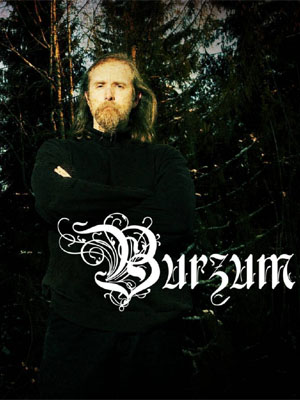 The semi-reclusive Varg Vikernes, sole composer of Burzum, has announced his plans to release a film and a new role-playing game (RPG). As part of the film project, he has revealed a new track designed to act as part of a soundtrack for the film.
The semi-reclusive Varg Vikernes, sole composer of Burzum, has announced his plans to release a film and a new role-playing game (RPG). As part of the film project, he has revealed a new track designed to act as part of a soundtrack for the film.
As if influenced by some of the non-black-metal soundtrack material from the film Until the Light Takes Us in which Vikernes, as in Lords of Chaos, the most in-depth story of black metal before it, Vikernes opts for a down-tempo single guitar track with no distortion.
The result utilizes a slow and gentle sweeping arpeggio behind which lower notes direct the evolution of the track, much as happened with the countertheme in “Rundgang um die transzendentale Säule Der Singularität” from Filosofem. As the song goes on, these layers interact to push change into the main theme, not in the electronica method of circular layers, but the metal one of a narrative expanding from within itself.
It is hard to tell if this is the type of material that will be on the forthcoming Burzum album Sôl austan, Mâni vestan. While many consider the “keyboard albums” among the band’s best output, a mixed-medium album could be interesting. While this new track has one foot in that world, it also has one foot in the more audience-geared world of the last few Burzum black metal albums.
19 CommentsTags: Ambient, Black Metal, burzum
Demilich compilation CD call for artifacts
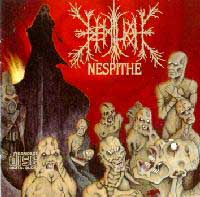 In a Google+ post, Demilich guitarist/vocalist Antti Boman both announces the arrival of a Demilich compilation CD on Svart Records, and calls for those with “artifacts” of the Demilich era to send them to him or end a link to where to download the material.
In a Google+ post, Demilich guitarist/vocalist Antti Boman both announces the arrival of a Demilich compilation CD on Svart Records, and calls for those with “artifacts” of the Demilich era to send them to him or end a link to where to download the material.
“The Demilich demo compilation CD and LP will be coming out in autumn. If you have old photos, flyers, or other Demilich memorabilia, good quality scans or originals will be gladly received,” Boman wrote, then added: “Thanks for the idea, dear brothers of Svart Records.”
For those who are joining death metal later in life, Demilich was one of the first death metal bands to break out of the fast and brutal and get into the weird and nuanced. Its style, featuring spidery lead rhythm playing slowly rotating to reveal a melodic core, influenced all that came after it.
While many in the early 1990s were slow to catch on to the value of technical death metal, perhaps fearing the wankery of the 00s that haunts us to this day and was dominant in “progressive” hardcore at the time, Demilich‘s return in 2006 brought huge crowds of maniacs to hail this unique and powerful band.
8 CommentsTags: death metal, Demilich
What the heck is metalcore?
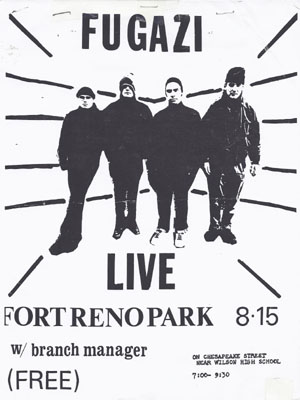 During the late 1990s, a different style of metal emerged in the death metal camp. Starting with bands like Dillinger Escape Plan, Killswitch Engage, Misery Index, The Haunted, Human remains, Ulcerate, Meshuggah and Discordance Axis, this new style was given many names at first.
During the late 1990s, a different style of metal emerged in the death metal camp. Starting with bands like Dillinger Escape Plan, Killswitch Engage, Misery Index, The Haunted, Human remains, Ulcerate, Meshuggah and Discordance Axis, this new style was given many names at first.
It’s math-metal, they said. No, it’s technical death metal (later shortened to “tech-deth” to keep people from expecting something like what Pestilence did on Spheres). Finally someone came up with “modern metal,” which many of us use like a catch-all.
The record companies were excited. Musically it was different. This style is accessible to more musicians, in addition to more fans, than the old style. It’s easier to make a reasonable impression of it, at least.
Thematically it was different. It’s everything that rock ‘n’ roll has always been. It’s loud, angry, and chaotic; perfect to disturb parents, which sells albums. Finally, unlike metal, it doesn’t stray into truly dangerous areas of thought. It is more likely to be written from an individual perspective, and less likely to glorify war, disease and death than protest them. Socially, it’s much “safer.”
What made it new was that it wasn’t like the extreme metal before it. However, it shared many techniques in common not just with that generation, but the generation before it. Specifically, many of the composition aspects are similar to those from post-hardcore bands like Fugazi, Rites of Spring, and Botch. These differences distinguished it from death metal in the following ways:
- Vocal rhythms. Death metal vocals are more like speed metal, which is to chant out the rhythm of the main riff or chorus phrase. Modern metal vocals are much like hardcore, which uses regularity of intervals between syllables to form a sound of protest. Death metal also prefers monotonic delivery with variant timbre, where hardcore vocals prefer more melodic vocal delivery with invariant timbre.
- Riffing. Death metal riffs are phrasal, or written as a flow of power chords forming a phrase or melody, and these fit together to form a narrative with poetic form, meaning that it takes the song from an initial place to a final place with a much different outlook. Modern metal riffs are inherently designed toward circular song constructions, like hardcore, and are based upon radical contrast between each other to suggestdeconstruction, like hardcore. Metal riffs form a synthesis through contrast; hardcore riffs deconstruct through contrast and reject synthesis.
- Drumming. Death metal drumming tends to follow the riff changes; modern metal drumming tends to lead the riff changes, anticipating them. In death metal, instruments tend to act in unison. In metalcore, they tend to each work separately and overlap as convenient.
- Style. Death metal aims toward unison of all instruments and riffs fitting together to make a larger narrative so as to maintain mood; modern metal, like hardcore before it, seeks to interrupt mood as if a form of protest music.
Critics of the terms “metalcore” and “modern metal” correctly note that these terms are being used as a catch-all. That’s correct, but it’s only part of the story. These terms are being used to describe something that’s not new, but existed before death metal and black metal reached their modern form. It’s an alternate branch of metal’s evolution, upgraded with death metal technique.
For students of metal history, this isn’t surprising. Genres tend to lie dormant in alternating generations, and then pick up on whatever was done well by the intervening generation. For example, power metal is what happens when speed metal and glam metal bands integrate death metal technique. Grindcore occurs when hardcore adopts crust and death metal technique. Speed metal occurs when metal adopts punk technique. By the same token, metalcore is what happens when you mix Fugazi with death metal technique.
This is not an argument against metalcore. If we’re going to like metal, we should understand it; if we’re going to understand it, we should study it; if we study it, we should organize our categories and language so as not to mislead each other. By this analysis, metalcore is an extension not of metal, but of the post-hardcore movement using metal technique, and thus it should be analyzed as more like hardcore instead of having us project our metal expectations upon it.
24 CommentsTags: indie metal, math-metal, metalcore, modern metal, nu-metal, tech-deth, Technical Death Metal
The rise of metal in Africa
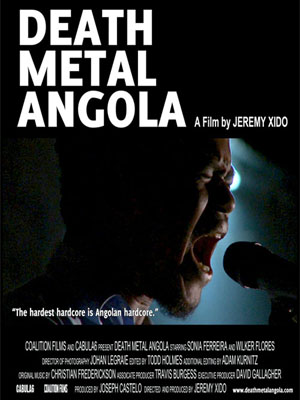 In parts of Southern Africa, a vibrant scene that hybridizes metal and extreme rock is taking hold, and defining a new vision of metal that is part local tradition and part melange of worldwide metal concepts.
In parts of Southern Africa, a vibrant scene that hybridizes metal and extreme rock is taking hold, and defining a new vision of metal that is part local tradition and part melange of worldwide metal concepts.
According to Africa Review, metalheads in Angola and Botswana have formed an “unexpected niche” through an energetic new metal scene.
American author Eddie Banchs comments on what makes a metal scene so distinctive. “Heavy metal is synonymous with a lifestyle which is seldom seen with other genres of music. Africa metal fans are not atypical in this regard,” he said.
According to Swedish researcher Magnus Nilsson, this new heavy metal culture was influenced in part by an alliance between heavy metal fans and country music fans. The metalheads adorn themselves with traditionally “country” accoutrements like sheriff badges, bandanas, cowboy hats and even toy revolvers.
According to the article, Botswana band Metal Orizon lead the movement by taking “Western-style hardcore rock and fusing it with familiar influences like African chants percussions to create a unique sound.” This gives the region a distinctive sound in addition to image.
In addition the article mentions several ongoing projects to document this phenomenon including the film Death Metal Angola, which documents the rise of a death metal sound unique to the region.
3 CommentsTags: africa, death metal
Interview: Ara

Music is never in stasis. It is composed of two parts, a form and a content. The two are related; in the best of situations, content causes the musician to innovate a new form. When the content changes, the old form is not relevant. However, some things are timeless and those forms persist.
Such questions emerge at the front of the mind when we look at Wisconsin’s Ara and their latest album, The Blessed Sleep. Whatever the changes that have been wrought in metal over the past 20 years, Ara roll back some of the tendencies toward excessive form and pointless technicality, and return the focus to songwriting. (See our review of The Blessed Sleep.)
Ara presents a challenge to what metal has become and to what many conceive of as metal. We figured we would go deeper for the whole story, and were fortunate to speak with guitarist and band cofounder Jerry Hauppa, who helped clarify the situation and told us about the inspiration and musical vision behind Ara’s latest, The Blessed Sleep.
You approach metalcore/tech-deth with a stripped-down style that focuses more on songwriting. What made you decide to do this, against the conventions of the genre?
None of us are really thrilled by the theatrics of sweeped scales masquerading as riffs in extreme metal nowadays. To the casual fan this can superficially be interpreted as sounding crazy and chaotic but we all come from older metal backgrounds where the riffs and arrangements had to have creativity and personality in order to express deviation between songs and moods. Cluttering up a song with a ton of parts can be an effective way to display chaos at times but we are trying to make sure each part serves the song well enough where nothing seems to be either filler or extraneous.
What do you think separates “modern metal” (metalcore, tech-deth, indie metal) from the older extreme metal like death metal and black metal?
The Blessed Sleep seems to have indirectly caused quite the argument about this in the comments section of your review for the record, but in my defense of death metal I clearly differ from the opinion of your readers in terms of what I feel falls under its umbrella. I think that “modern metal” is less a genre and more a statement that tries to separate any current take on the genre that threatens the ethos created in the early 90s. I agree that most of what I hear nowadays doesn’t resonate with me, but I’m not going to invalidate it by claiming it isn’t death metal or black metal because I’m afraid of what that means for me as a listener.
What I will say, is that I feel I have an uncanny ability to hear motive in music, and what I think you are getting at with the title “modern metal” is the unfortunate actions of -core acts that clearly resemble marketing ploys and the inhibiting crutches present in their writing, which throw at the listener a sense of immediate gratification through the aforementioned sweeps and of course, breakdowns. What we are trying to do is not throw the listener a bone so I feel we have more in common with the rebellious aspects of the early death metal movement than what people are considering to be “modern.”
In your view, what are the founding acts that influenced this style? What influences do you as a band have in addition to these?
The style shown on the record, or in modern metal? As for the latter, I have no idea really. I know that it seems many young bands don’t understand the history of metal and are trying to emulate a band that has emulated another band and so on, and that’s a shame with the ease of resources we have nowadays.
I guess as for the aspect of a more chaotic form of death metal, you could probably say that Cryptopsy’s Whisper Supremacy took the idea of a metal song arrangement and turned it upside down- at least for me, when I heard it, nothing really sounded like it. Today’s bands probably are really far removed from that record but the bands they ripped off might be familiar, I don’t know.
As for the influences of the band, for me, I’ve always been drawn to more complex music because I like to hear something new in a song each time I hear it. I’d say Gorguts, Anata and Cryptopsy are definite influences, as well as Theory in Practice and maybe the early explosion of Unique Leader bands. As far as how the record sounds, I could probably say I was drawn to the feel of Sinister’s Aggressive Measures record in terms of their atonal leanings and not having the guitars be tuned super low. The rest of the guys in the band have a huge list of influences, but I can say I know Erik worships Discordance Axis, Adam loves stuff like Fleshgod Apocalypse and Jim listens to everything under the sun.
How did you get the crisp sound on The Blessed Sleep? It sounds like you played it live, but somehow got a nice digital snap to each track. Where was it recorded?
We recorded with Shane Hochstetler at Howl Street Studios, and we are extremely happy with the sound. We have recorded there numerous times with other projects and he is a blast to work with and everything he does sounds amazing. I don’t really care for the sterile production of modern metal bands and really wanted this record to sound tight yet savage, so we deliberately left it without too much polish to give it its own atmosphere. As for how we got the sound, I know there are tons of guitar tracks going on all the time so it has a wall of sound that gives it the heaviness that I think a lot of technical bands are lacking.
What prompted you to found Ara, in the style you’ve chosen, and what additions do you hope to make to the genre?
I always wanted to do my take on death metal since I was a teenager, and only now am I lucky enough to be around the musicians that can make it happen. The style is I suppose an amalgamation of all of my influences in extreme metal, but as I get better at writing music I really feel as though the compositions are inherently mine and don’t directly emulate any particular band.
As far as the second half of your question, I don’t have any lofty goals where I think we can be flagbearers for any kind of genre movement, I just hope people check out the record and like it. If I had any wish that we could influence anything, I do hope the riff can come back. I miss and mourn for the riff.
Where do you want to go after The Blessed Sleep? It seems like you’ve reached a peak within this genre; are you going to grow in a new direction, or refine?
As of today I have written 11 songs for a full length and am really excited to see how the new material will shape up. The rest of the guys know four of the new songs and I would say it is decidedly different from The Blessed Sleep. There is a much greater focus on melody but not in the At the Gates way, probably more in an Anata way. I am trying to make the songs complex but with very few themes explored per song because I want each song to be its own entity. You can hear one of the new songs in the live set on the youtube video you posted, it’s the last one we played. I’m trying to balance melody with discordance in each song. Some of the newer stuff is way faster than anything we’ve done and we have some doomier stuff as well. If you like The Blessed Sleep I think you’ll be excited for the progression. Also, we are very much hoping for label support for future recordings.
What do you think draws people to your music?
The band is very new so I don’t really know yet. People like speed and we have and love lots of blast beats. We also try to be atypical so I assume people that like weird metal will hopefully like it. Time will tell.
If fans wanted to explore your music, where do you recommend they start, and what should they do next?
You can stream the whole record at arawi.bandcamp.com, so there you go. Then I suppose you should follow us on Facebook to find out what we’re up to and where we’re playing.
Will you be touring for this album? Will we see you in Texas?
I absolutely want to get on the road for this record and hopefully we can do so later in the year. Erik and I play in another band called Northless that is in the studio next month so after that is wrapped up we can get our scheduling straight and play outside our home town. We would love to play in Texas if everything works out and if so we will definitely let you know! Thanks for your time and the support!
49 CommentsTags: ara, death metal, metalcore, modern metal
